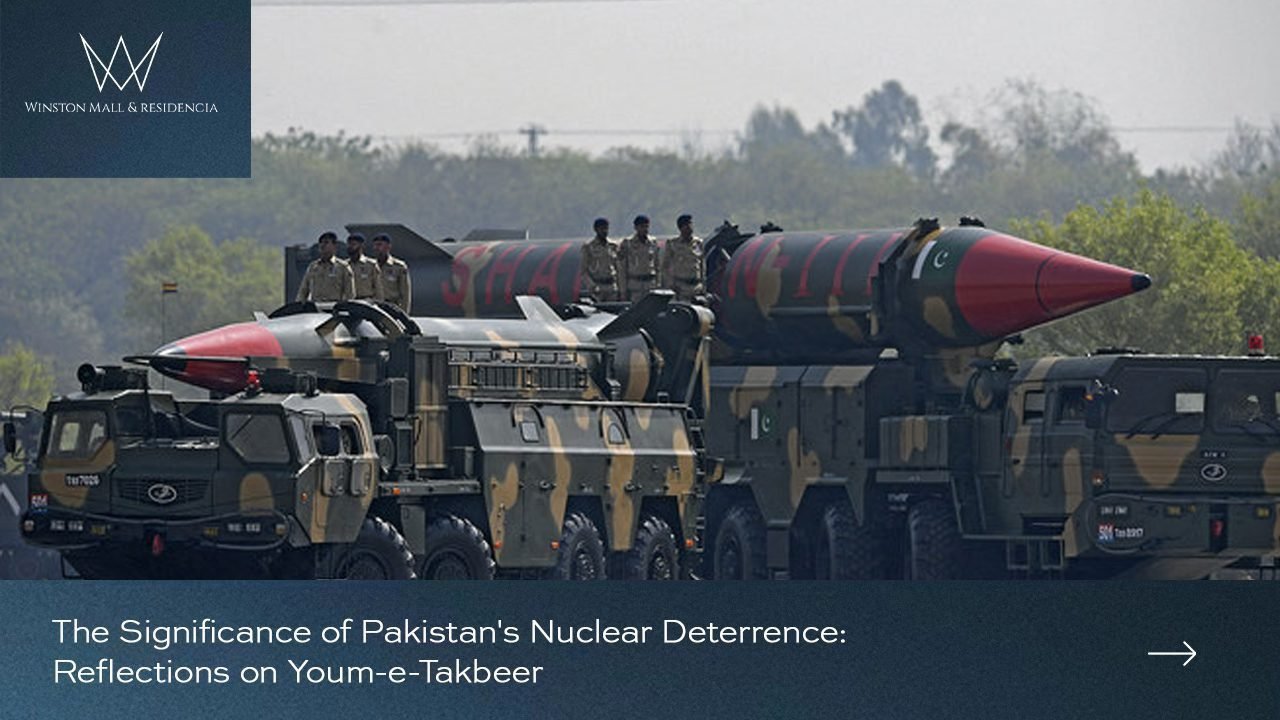On May 28, 1998, Pakistan led a progression of atomic tests in the Chagai region of Balochistan. This historic event, commemorated as Youm-e-Takbeer (The Day of Greatness), marked a turning point in Pakistan’s security posture and regional dynamics. The tests were a response to India’s nuclear tests earlier that month, which left Pakistan with no decision except for to show its atomic capacity to reestablish vital dependability in South Asia.
Table of Contents
ToggleRestoring the Strategic Balance
The atomic tests showed the purpose of the Pakistani country to defend its regional respectability, freedom, and power. Thus, Pakistan turned into the seventh atomic power on the planet and the main in the Muslim world. This interesting occasion filled in as a sign of Pakistan difficult decision to guarantee its guard in spite of gigantic worldwide strain.
After India’s nuclear tests, its politicians and public believed they had a monopoly over nuclear technology in the region. Subtle provocations were made toward Pakistan, leaving the country with no other choice except for to direct its tests because of the absence of worldwide assurances against the atomic danger from India.
Pakistan’s Efforts for Regional Peace and Nuclear Restraint
Despite the challenges, Pakistan has consistently advocated for regional nuclear restraint and non-proliferation measures. Beginning in 1974, Pakistan has proposed different answers for India pointed toward keeping up with harmony and atomic limitation in South Asia, including:
- Establishing a nuclear-free zone in the region
- Revoking the procurement and production of atomic weapons (1978)
- Mutual inspections of nuclear facilities, adherence to the NPT, and full-scope IAEA safeguards (1979)
- A South Asian atomic weapon Extensive Test Boycott Settlement (1987)
- Multilateral conferences on nuclear non-proliferation in South Asia (1991, 1991)
- Creating a missile-free zone in South Asia (1993)
- A strategic restraint regime (SRR) and joint consent to diminish the danger of atomic conflict and rocket race (1998)
- Prohibiting missile defense systems and restraint in deploying nuclear weapons and missiles (2006)
- A Strategic Nuclear Restraint Regime (SNRR) focused on missile restraint, peaceful conflict resolution, and conventional balance (2011)
- A respective game plan for the non-testing of atomic weapons (2016)
Regrettably, India’s response to these proposals has been disappointing, as it has shown no interest in pursuing them.
Pakistan’s Commitment to Global Non-Proliferation Efforts
PAKISTAN HAS BEEN PROACTIVELY INVOLVED IN GLOBAL INITIATIVES AIMED AT REINFORCING INTERNATIONAL REGULATIONS CONCERNING ARMS CONTROL, NON-PROLIFERATION, AND DISARMAMENT, AND HAS IMPLEMENTED CONTEMPORARY INTERNATIONAL GUIDELINES ON NATIONAL NUCLEAR SAFETY, SECURITY, AND EXPORT CONTROLS.
Peaceful Uses of Nuclear Technology
Beyond its role in national defense, Pakistan’s nuclear program has enabled the advancement in peaceful uses of nuclear energy. The country continues to utilize the enormous potential of nuclear technology for socio-economic development and achieving sustainable development goals (SDGs). Nuclear technology in Pakistan is not confined to energy and power production alone but is also successfully utilized in agriculture, medicine, and scientific research and development.
In February 2023, the Chief General of the International Atomic Energy Agency (IAEA), Rafael Grossi, visited Pakistan and commended its “faultless” atomic security record, expressing that he predicts a splendid future for atomic power in the country
Conclusion
Youm-e-Takbeer holds a huge spot in Pakistan’s set of experiences and fills in as a sign of the country’s resolved endeavors to foster a powerful guard component to counter hostility. Regardless of the difficulties, Pakistan stays focused on advancing harmony and steadiness, inside its nation as well as at the local and worldwide levels. The nation solidly puts stock in the standards of shared regard, collaboration, and tranquil conjunction with its neighbors and the worldwide local area.
FAQs
Why did Pakistan conduct nuclear tests in 1998?
Pakistan conducted nuclear tests on May 28, 1998 in response to India’s nuclear tests earlier that month. The tests were necessary to restore strategic stability in South Asia and demonstrate Pakistan’s nuclear capability as a deterrent against Indian aggression.
What is the significance of Youm-e-Takbeer?
Youm-e-Takbeer (The Day of Greatness) commemorates Pakistan’s nuclear tests on May 28, 1998. It marks a pivotal moment in Pakistan’s history when the country became the 7th nuclear power and first in the Muslim world.
Has Pakistan proposed arms control initiatives?
Yes, Pakistan has regularly proposed various arms control and non-proliferation initiatives to India aimed at maintaining peace and nuclear restraint in South Asia since 1974. However, India has shown little interest in pursuing these proposals.
Does Pakistan utilize nuclear technology for peaceful purposes?
Yes, Pakistan utilizes nuclear technology for peaceful purposes like agriculture, medicine, scientific research and development in addition to energy production. The IAEA has praised Pakistan’s impeccable nuclear safety record.
What is Pakistan’s stance on promoting regional stability?
Pakistan remains committed to promoting peace, stability, mutual respect and peaceful coexistence with neighbors and the international community through dialogue, cooperation and arms control rather than an arms race.




